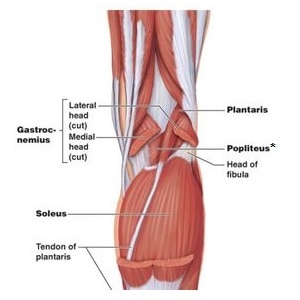Hello world!
Welcome to Sisler. This is your first post. Edit or delete it, then start writing!
Welcome to Sisler. This is your first post. Edit or delete it, then start writing!
I stood in front of an applauding crowd of almost 30 people, and I was smiling. I was elected president of the (ISC)2 Raleigh Durham chapter and I was happy about it… so why was there a little voice in my head telling me, “you …
If you are told that you have an overdeveloped or inflated popliteous you may not know if it is a compliment or not. I did not :). Over time I have gone to different massage therapists, even some that volunteered at running events, and nobody has an explanation for the ‘bumps’ behind my knees.
They are symmetrical to each other and can be flexed and relaxed so I believe they are muscles and the closest thing I can find is popliteus.
Despite my love affair with running that I found in my 40’s, I have had these as long as I can remember, although I ran 5 miles at a time with my Pop-Pop on Saturdays when I was 5 and 6 years old.
If anyone else seems to have or have seen this let me know, I am curious.
The popliteus muscle in the leg is used for unlocking the knees when walking, by laterally rotating the femur on the tibia during the closed chain portion of the gait cycle (one with the foot in contact with the ground). In open chain movements (when the involved limb is not in contact with the ground), the popliteus muscle medially rotates the tibia on the femur. It is also used when sitting down and standing up. It is the only muscle in the posterior (back) compartment of the lower leg that acts just on the knee and not on the ankle. The gastrocnemius muscle acts on both joints.
– Wikipedia

Typically they are not visible from the outside of your body, but apparently mine are grotesque.
Pic here…
Pic here…
The octopus is an amazing creature. Considering how they have adapted and evolved so differently compared to ourselves and even other sea creatures is fascinating. There is also an element of mystery about them being from the ocean. The octopus’s mere form has become an …
The Kinesin are the molecules that carry protein to nerves, like the amazing network in our brains.
Kinesins were discovered as MT-based anterograde intracellular transport motors. The founding member of this superfamily, kinesin-1, was isolated as a heterotetrameric fast axonal organelle transport motor consisting of 2 identical motor subunits (KHC) and 2 “light chains” (KLC) via microtubule affinity purification from neuronal cell extracts. Subsequently, a different, heterotrimeric plus-end-directed MT-based motor named kinesin-2, consisting of 2 distinct KHC-related motor subunits and an accessory “KAP” subunit, was purified from echinoderm egg/embryo extracts and is best known for its role in transporting protein complexes (IFT particles) along axonemes during cilium biogenesis. Molecular genetic and genomic approaches have led to the recognition that the kinesins form a diverse superfamily of motors that are responsible for multiple intracellular motility events in eukaryotic cells. For example, the genomes of mammals encode more than 40 kinesin proteins, organized into at least 14 families named kinesin-1 through kinesin-14.
These videos are exceptionally well made and explanatory:
My final paper for this class was to represent the theory that explains that although Dark Matter can be created by a Primordial Black Hole that the amount of Dark Matter in the Universe is far more than the mathematics can support; until recently. The …
The first assignment in my Universe class was to support the Big Bang theory in under 500 words. Since I believe that knowledge should be always obtainable in distribution and content level, I have written this at a U.S. high school level and I used …
 This is evidence that phenomena still raises it’s head, and our eyebrows, as we are able to look deeper and deeper into formulation.
This is evidence that phenomena still raises it’s head, and our eyebrows, as we are able to look deeper and deeper into formulation.
By looking closely at the Mandelbrot set, we can normalize the set geometrically and find an order; that order is a framework built upon the Fibonacci sequence. Who knew?
If you are remotely interested in math consider following the Numberphile series on YouTube.
Also, JoCo wrote a song about Mandelbrot that can be seen here.
[embedyt] https://www.youtube.com/watch?v=4LQvjSf6SSw[/embedyt]
This guy Leo is ridiculous. He plays all the instruments, sings, and mixes everything; save a few guest appearances like in this video below: Oh, and it’s metal-fied, so turn it up!